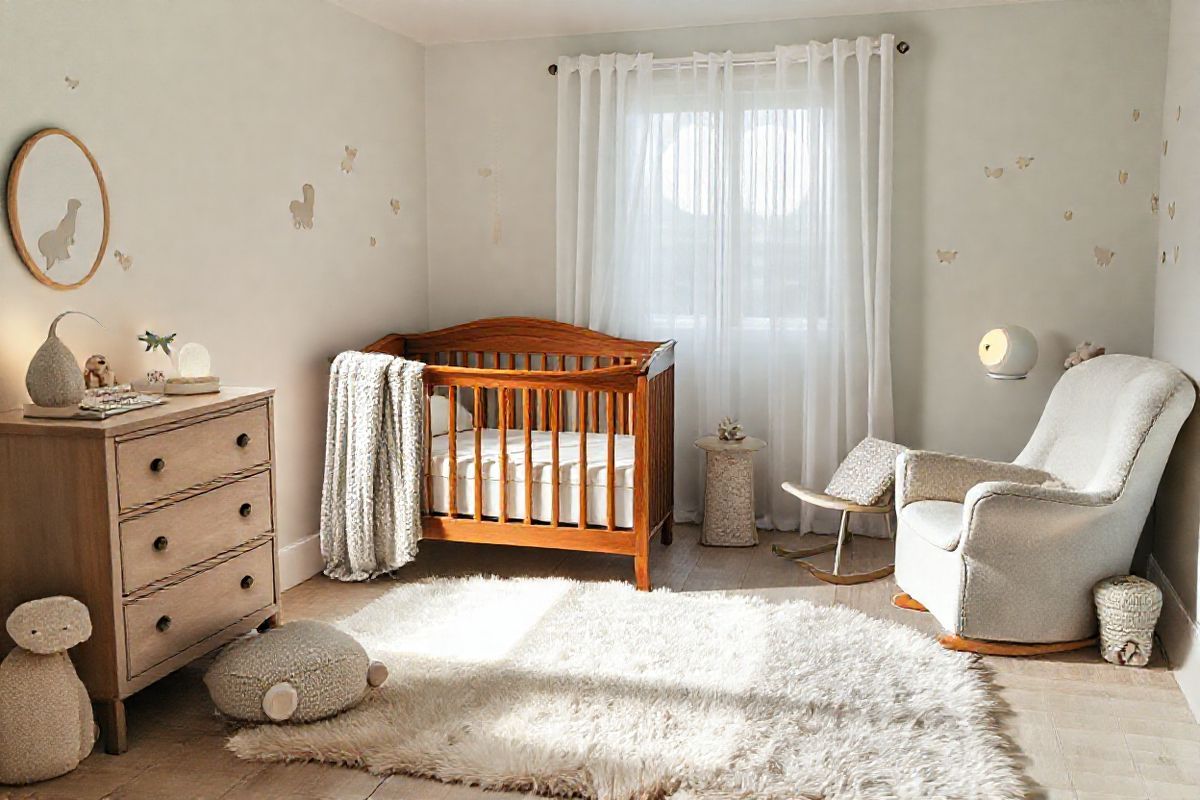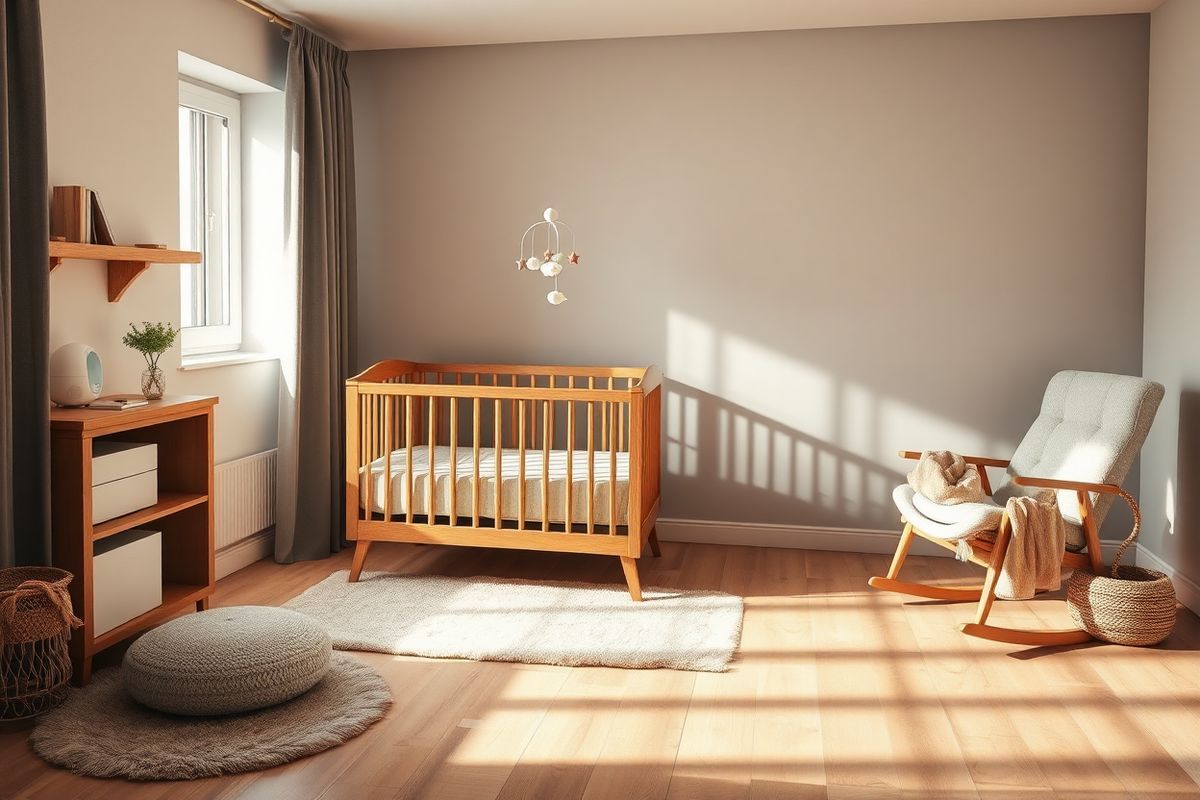Table of Contents
Understanding the Importance of a Consistent Bedtime Routine for Babies

Establishing a consistent bedtime routine for your baby is not just a parenting trend but a fundamental aspect of promoting healthy sleep habits. Research indicates that a structured bedtime routine can significantly aid in easing the transition to sleep, making babies feel secure and settled (Raising Children, 2024). A systematic approach to nightly rituals helps babies understand what to expect as bedtime approaches, which can lead to quicker and more peaceful sleep onset.
Moreover, a consistent routine aids in regulating a baby’s internal clock, promoting better sleep quality over time. Multiple studies highlight that babies who engage in bedtime routines tend to have fewer sleep disturbances and wake less frequently during the night (Raising Children, 2024). This is particularly important as sleep is crucial for infants’ growth and cognitive development. According to the National Sleep Foundation, newborns require approximately 14 to 17 hours of sleep within a 24-hour period, with sleep needs tapering off as they grow older (KidsHealth, 2024). By cultivating a reliable bedtime routine, parents can enhance their baby’s sleep patterns, leading to improved overall health and mood for both the baby and parents.
How to Establish a Soothing Sleep Environment for Your Little One

Creating a conducive sleep environment is crucial for helping your baby settle down at night. Here are several strategies to establish a soothing sleep atmosphere:
-
Room Environment: Ensure your baby’s sleeping area is conducive to sleep. The room should be cool, dark, and quiet. Using blackout curtains can help block out excess light, while white noise machines can provide a gentle background sound that masks other disturbances (NHS, 2024).
-
Crib Safety: Follow the American Academy of Pediatrics (AAP) guidelines by placing your baby on their back to sleep on a firm mattress covered with a fitted sheet. Remove any soft items, such as toys and blankets, to reduce the risk of suffocation (KidsHealth, 2024).
-
Consistent Sleep Location: Keep the sleeping environment consistent. Whether in a crib, bassinet, or co-sleeper, maintaining the same sleep space can help your baby associate that area with sleep (NHS, 2024).
-
Temperature Control: Monitor the room temperature to ensure it is comfortable for your baby. Keeping the room slightly cooler than the rest of the house can help prevent overheating, which is a risk factor for Sudden Infant Death Syndrome (SIDS) (KidsHealth, 2024).
-
Pre-Sleep Activities: Implement calming activities leading up to bedtime, such as reading a book, singing a lullaby, or gentle rocking. These activities can help signal to your baby that it is time to wind down for sleep (Raising Children, 2024).
Key Activities to Include in Your Baby’s Bedtime Routine
An effective bedtime routine should be simple, soothing, and age-appropriate. Here are essential activities to consider incorporating:
-
Bath Time: A warm bath can be calming and signal that it’s time to relax. Bathing can help lower your baby’s body temperature after they exit, aiding in the natural drop in body temperature that promotes sleepiness (NHS, 2024).
-
Changing into Sleepwear: After a bath, change your baby into comfortable pajamas. This transition can further indicate that it’s time for sleep (Raising Children, 2024).
-
Quiet Time Activities: Engage in quiet activities such as reading a story or singing soft songs. Research shows that reading helps develop language skills and can enhance parent-child bonding (Raising Children, 2024).
-
Final Feeding: If your baby is still feeding at night, a final feed can provide comfort. However, try to avoid feeding them to sleep to prevent forming sleep associations where they can only sleep while feeding (KidsHealth, 2024).
-
Goodnight Ritual: End the routine with a consistent goodnight phrase or a gentle cuddle. This can help reinforce the idea that it’s time to sleep (NHS, 2024).
Recognizing Your Baby’s Sleep Signals: When to Put Them to Bed
Understanding your baby’s sleep cues is essential for timely bedtimes. Signs that your baby is ready for sleep include:
- Rubbing Eyes: A clear indication that your baby is feeling sleepy.
- Yawning: Frequent yawning can signal that your baby is tired and ready for sleep.
- Fussiness: If your baby becomes irritable or fussy, it may be time to settle them down for sleep (NHS, 2024).
Newborns typically wake every few hours for feeding and may not yet have established clear sleep-wake cycles. However, as babies grow, they begin to show more regular sleep patterns, usually around three months of age (Raising Children, 2024). It’s important to place them in their crib when drowsy but still awake, allowing them to learn to fall asleep on their own, which is crucial for developing self-soothing skills (NHS, 2024).
Troubleshooting Common Sleep Challenges: Tips for Restful Nights
Even with a consistent bedtime routine, parents may encounter sleep challenges. Here are some strategies to address common issues:
-
Frequent Night Wakings: If your baby wakes frequently during the night, assess their needs. They may be hungry, uncomfortable, or in need of a diaper change. If they wake but are not distressed, give them a few minutes to see if they can settle themselves back to sleep (KidsHealth, 2024).
-
Sleep Resistance: Babies may resist going to bed due to overstimulation. Keep pre-bedtime activities calm and quiet, and establish a consistent routine that they can learn to anticipate (NHS, 2024).
-
Separation Anxiety: Around six months, babies may experience separation anxiety. This is a normal developmental phase. Gradually teaching your baby to fall asleep independently can help ease this transition (KidsHealth, 2024).
-
Napping Issues: Ensure that your baby is not overtired by observing their sleep cues. Consistent nap times during the day can help them feel more rested and ready for bed at night (NHS, 2024).
FAQ
Q: How many hours of sleep do newborns need?
A: Newborns typically need about 14-17 hours of sleep over a 24-hour period, often waking every 2-4 hours for feeding.
Q: What should I include in my baby’s bedtime routine?
A: A good bedtime routine may include a warm bath, changing into pajamas, quiet reading time, a final feeding, and a consistent goodnight ritual.
Q: How can I create a sleep-friendly environment for my baby?
A: Ensure the room is cool, dark, and quiet. Use blackout curtains, maintain a comfortable temperature, and keep the sleeping area clean and safe.
Q: How can I tell when my baby is ready for sleep?
A: Look for signs like rubbing their eyes, yawning, or fussiness. These cues indicate that your baby is likely tired and ready to sleep.
Q: What should I do if my baby wakes frequently at night?
A: Assess their needs (hunger, discomfort, etc.) and give them time to settle. If they are not distressed, allow them a few moments to try to fall back asleep on their own.
References
- Raising Children. (2024). Bedtime routines: babies, children & teens. Retrieved from https://raisingchildren.net.au/toddlers/sleep/better-sleep-settling/bedtime-routines
- KidsHealth. (2024). Sleep and your newborn (for parents). Retrieved from https://kidshealth.org/en/parents/sleepnewborn.html
- NHS. (2024). Helping your baby to sleep. Retrieved from https://www.nhs.uk/conditions/baby/caring-for-a-newborn/helping-your-baby-to-sleep/
- KidsHealth. (2024). Sleep in infants (2-12 months). Retrieved from https://www.nationwidechildrens.org/specialties/sleep-disorder-center/sleep-in-infants
- Raising Children. (2024). Baby sleep: what to expect at 2-12 months. Retrieved from https://raisingchildren.net.au/babies/sleep/understanding-sleep/baby-sleep-2-12-months
- KidsHealth. (2024). Infant sleep. Retrieved from https://kidshealth.org/en/parents/sleep13m.html











